Music of the Chicano Movement
Lesson Hub 8:
A People Without a Place
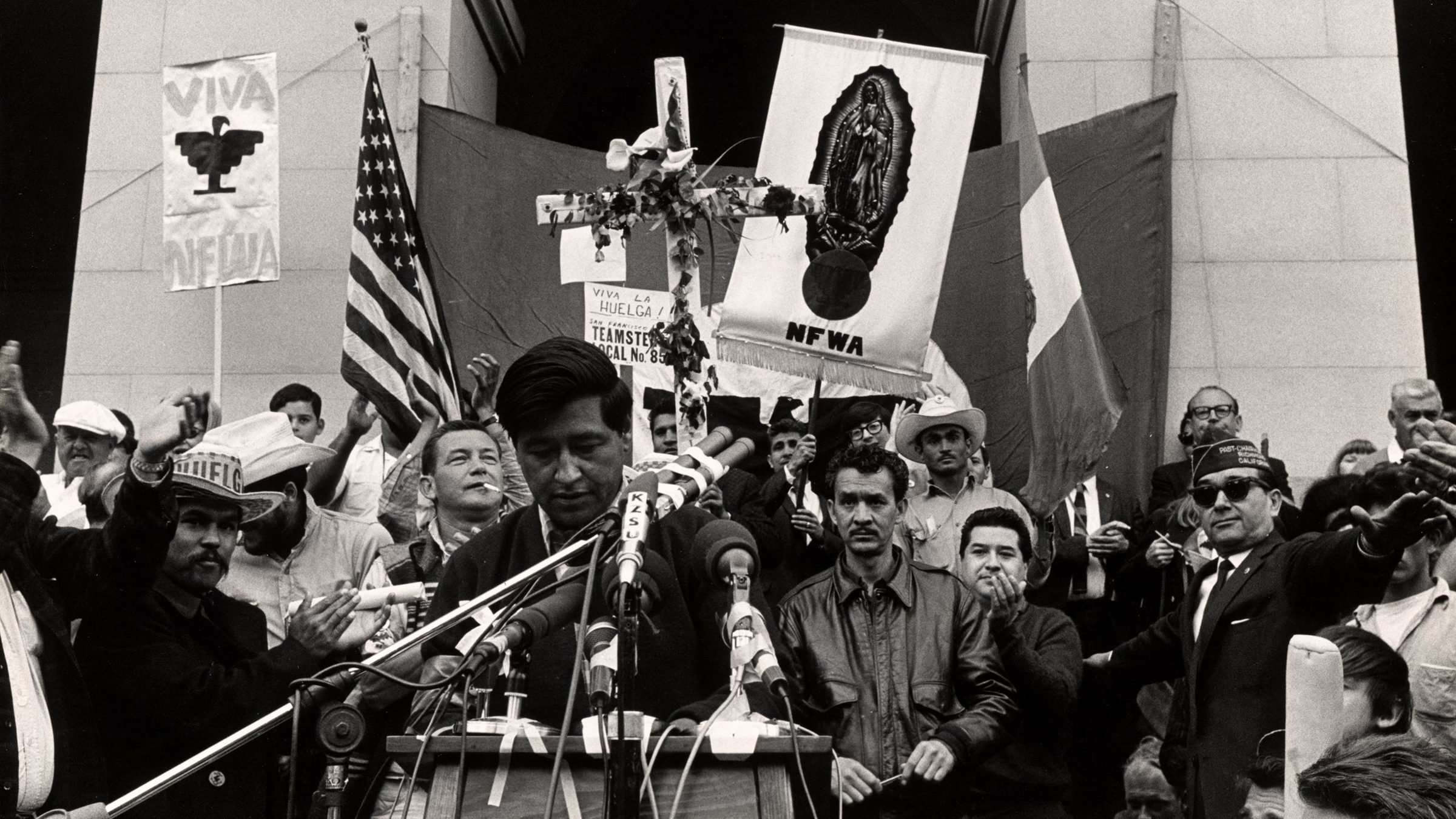

What can music teach us about the ways in which members of the Chicana/o community have claimed their rightful place in American society?
The overarching essential question for Lesson 8 is:
Emiliano Zapata Statue at Chicano Park, photo by Russell Hart. ShotFromTheHart Studio.
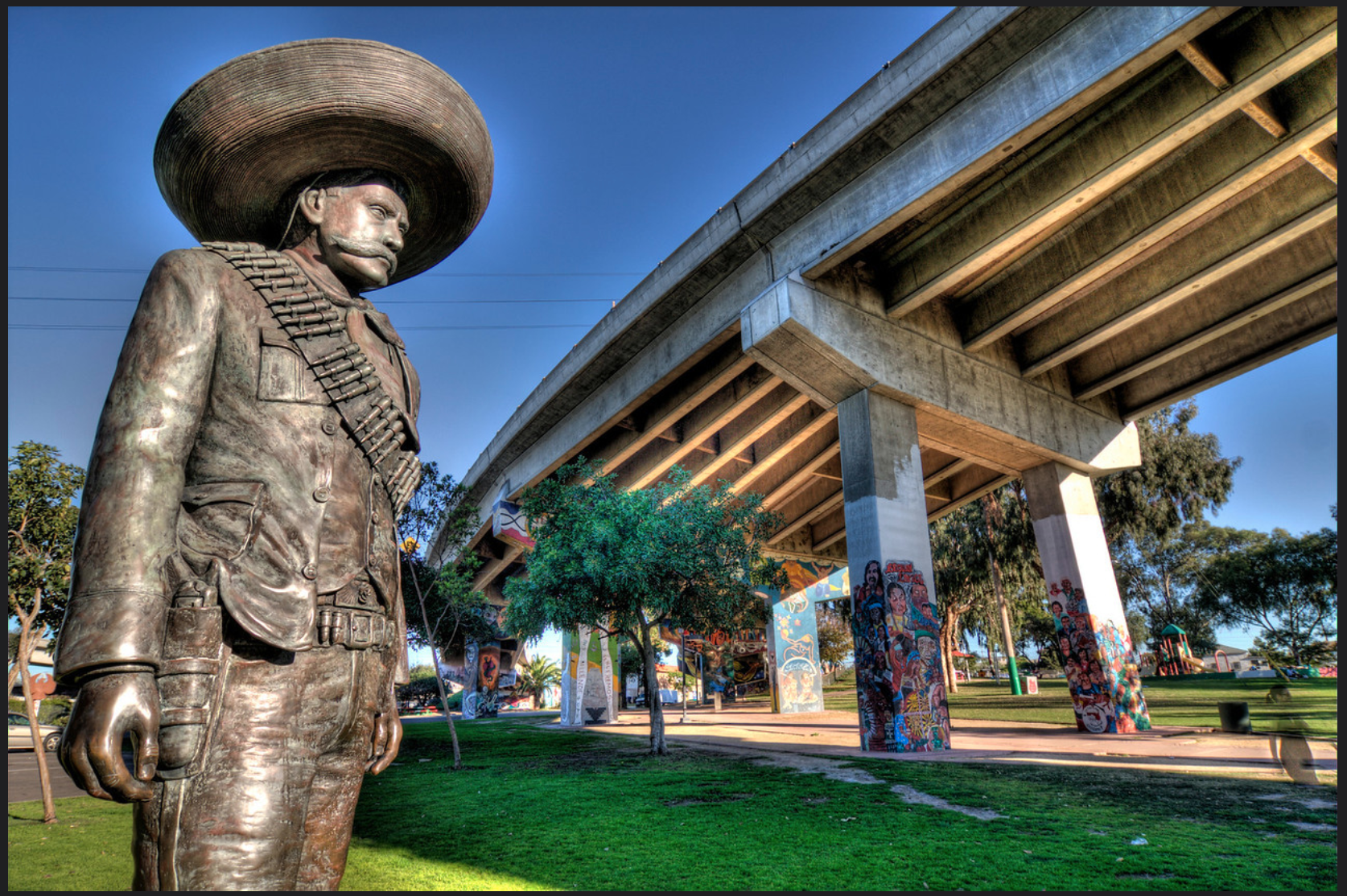

A People Without a Place
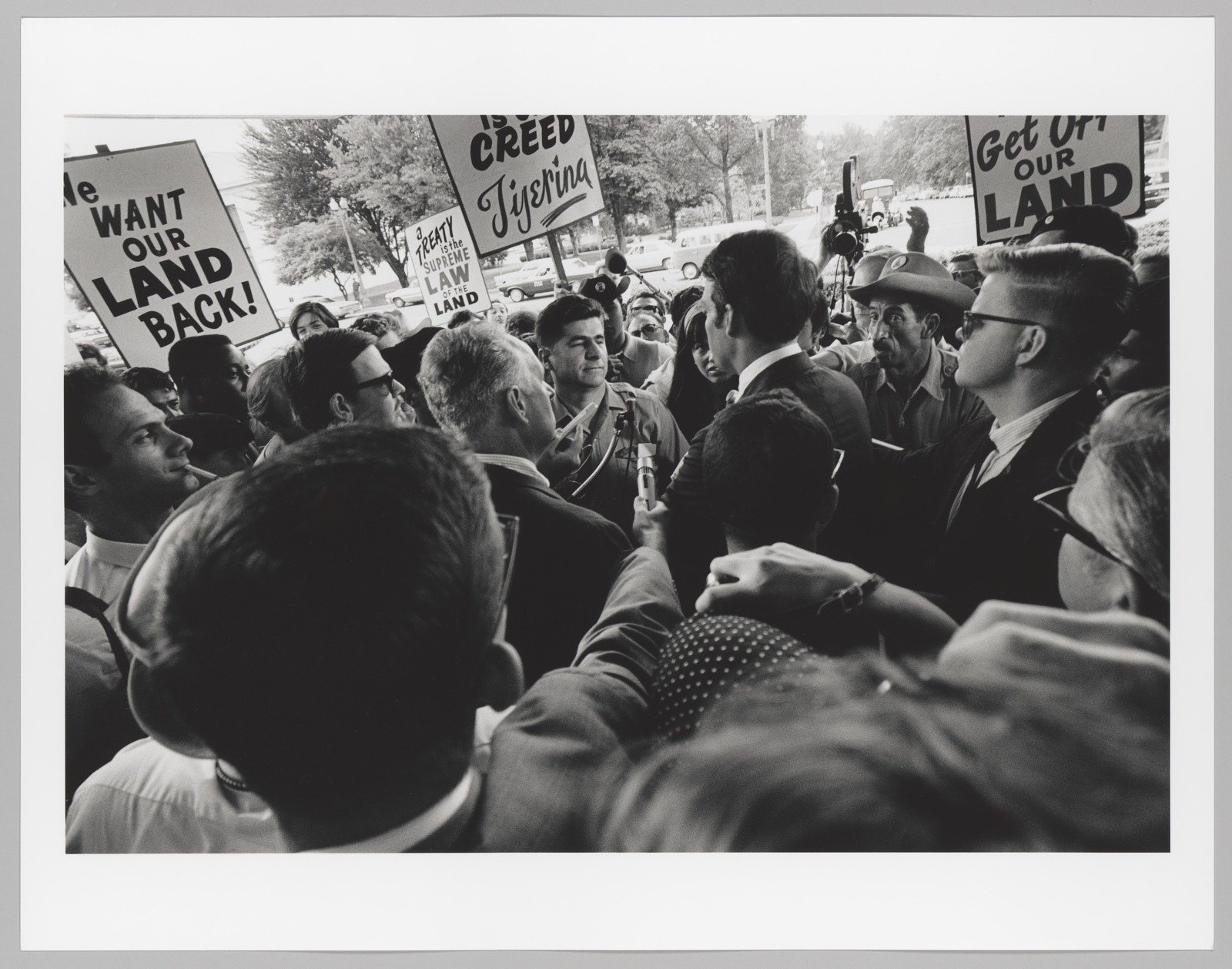
Resurrection City: Untitled, photo by Jill Freedman. National Museum of African American History and Culture.
Remembering Displacement
Path 1

20+ minutes


Exchange Copy of the Treaty of Guadalupe Hidalgo. National Archives, PD (U.S. Code § 105).
Read and think about the meaning of this famous quote by Maya Angelou, an important American writer and poet:
“The more you know of your history, the more liberated you are”
Do you agree with this statement? Why or why not?
Opening Discussion


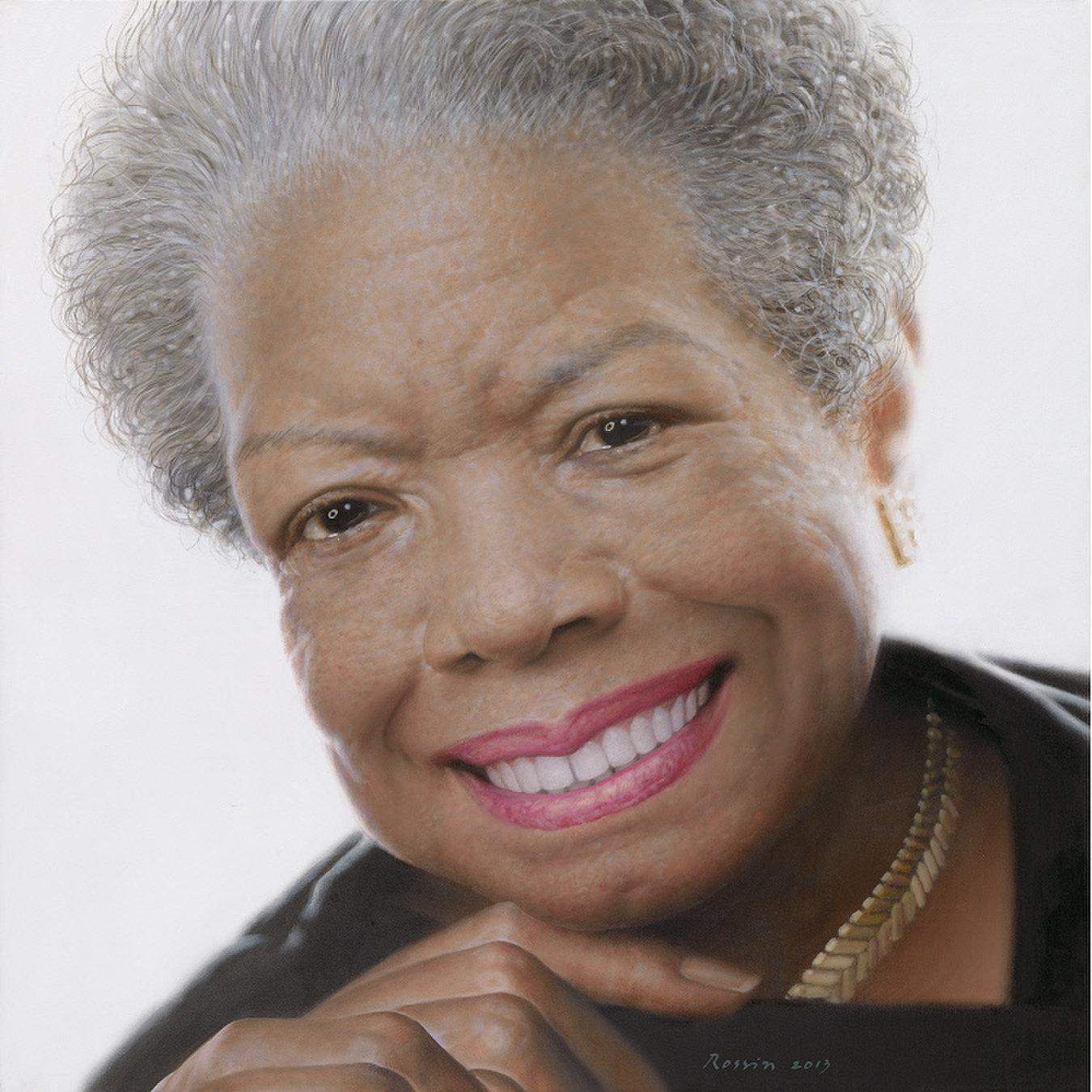
Maya Angelou, photo by Ross R. Rossin. National Portrait Gallery.
Artist Spotlight: Agustín Lira

It seems safe to say that Agustín Lira, an important musician during the Chicano movement, agreed with this statement.
He traveled from one town to the next writing and performing songs that he thought would help Mexican Americans better understand the historical context of their oppression.

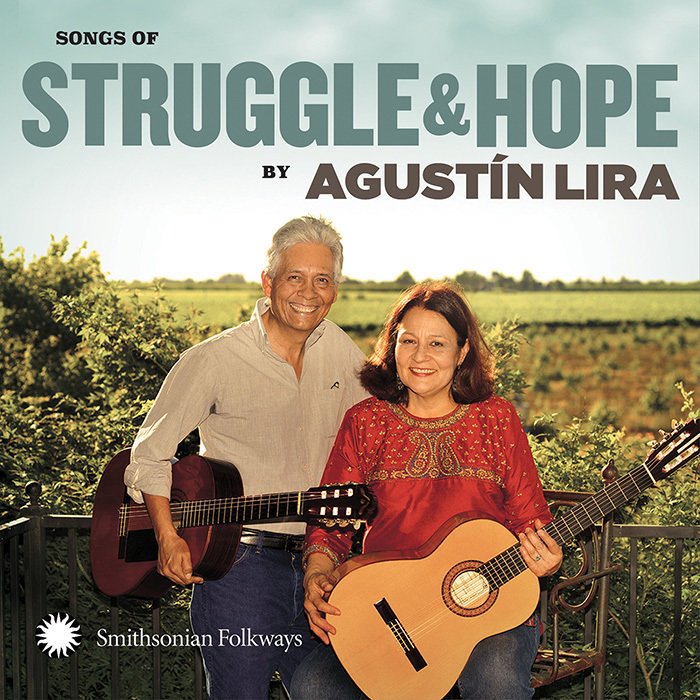
Songs of Struggle and Hope, by Agustín Lira, cover art by Galen Lawson. Smithsonian Folkways Recordings.
About Agustín

As a musician and songwriter, he has used (and continues to use) his deep knowledge of historical events to tell “stories that demonstrate how those who are not included in American history books are as worthy as those who are” (liner notes, p. 9).


Agustín has always been an avid reader and enjoys studying history.
Agustín Lira: Writing an Anthem

After joining the Farm Workers Movement in Delano, California in 1965, Agustín began to study an important historical document called the Treaty of Guadalupe Hidalgo.
He wrote a song about it called "Quihubo raza" (What's Happening People), which eventually became one of the most popular anthems of the Chicano movement.


What was the Treaty of Guadalupe Hidalgo?


It added 525,000 square miles to the United States territory (parts of modern-day Arizona, California, Colorado, Nevada, New Mexico, Utah and Wyoming).

Mexican Cession in Mexican View, created by United States Geographical Survey. Wikimedia Commons, PD (U.S. Code § 105).
The Treaty of Guadalupe Hidalgo was signed at the end of the Mexican-American War in 1848.
In return, the United States agreed to pay Mexico $15 Million.
The Treaty of Guadalupe Hidalgo acknowledged the large number of Mexican citizens who lived on the United States’ newly acquired land and promised these people all rights and privileges afforded to American citizens . . . including the right to retain the property they owned prior to the signing of the treaty.
Click here for a transcription of the Treaty of Guadalupe Hidalgo.
Promises of the Treaty of Guadalupe Hidalgo



What's Happening People?


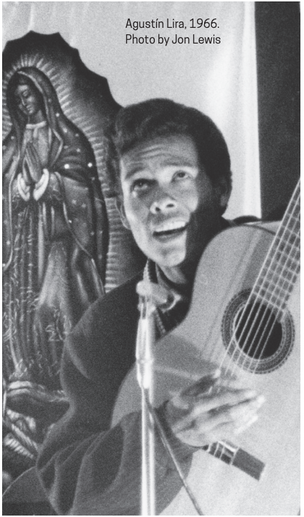
Agustín Lira, photo by Jon Lewis. Smithsonian Folkways Recordings.
What's Happening People?


Quihubo, Raza, video of song by Agustín Lira & Alma. Smithsonian Folkways Recordings.
What's Happening People?


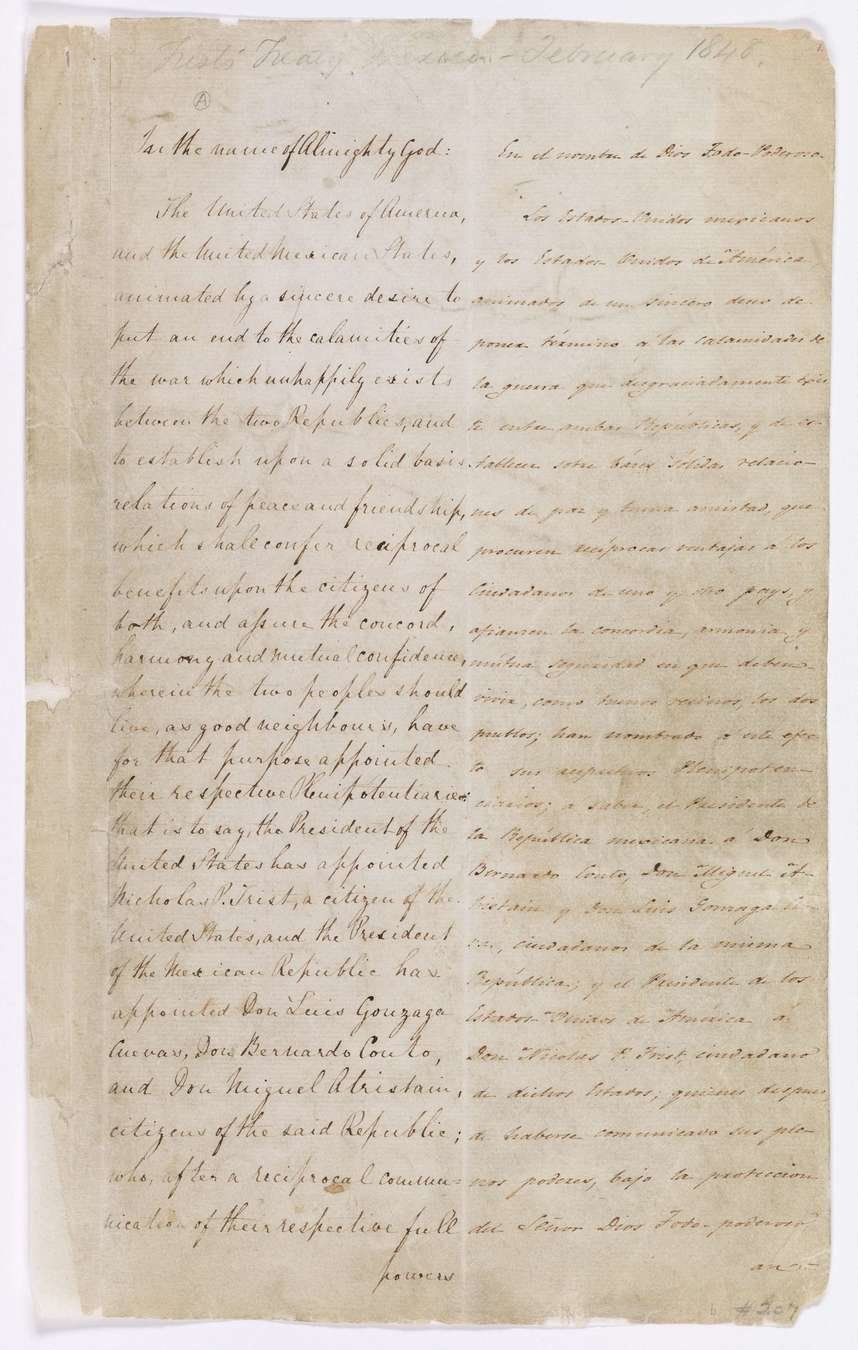
Treaty of Guadalupe Hidalgo. National Archives, PD (U.S. Code § 105).
More Context: What's Happening People?


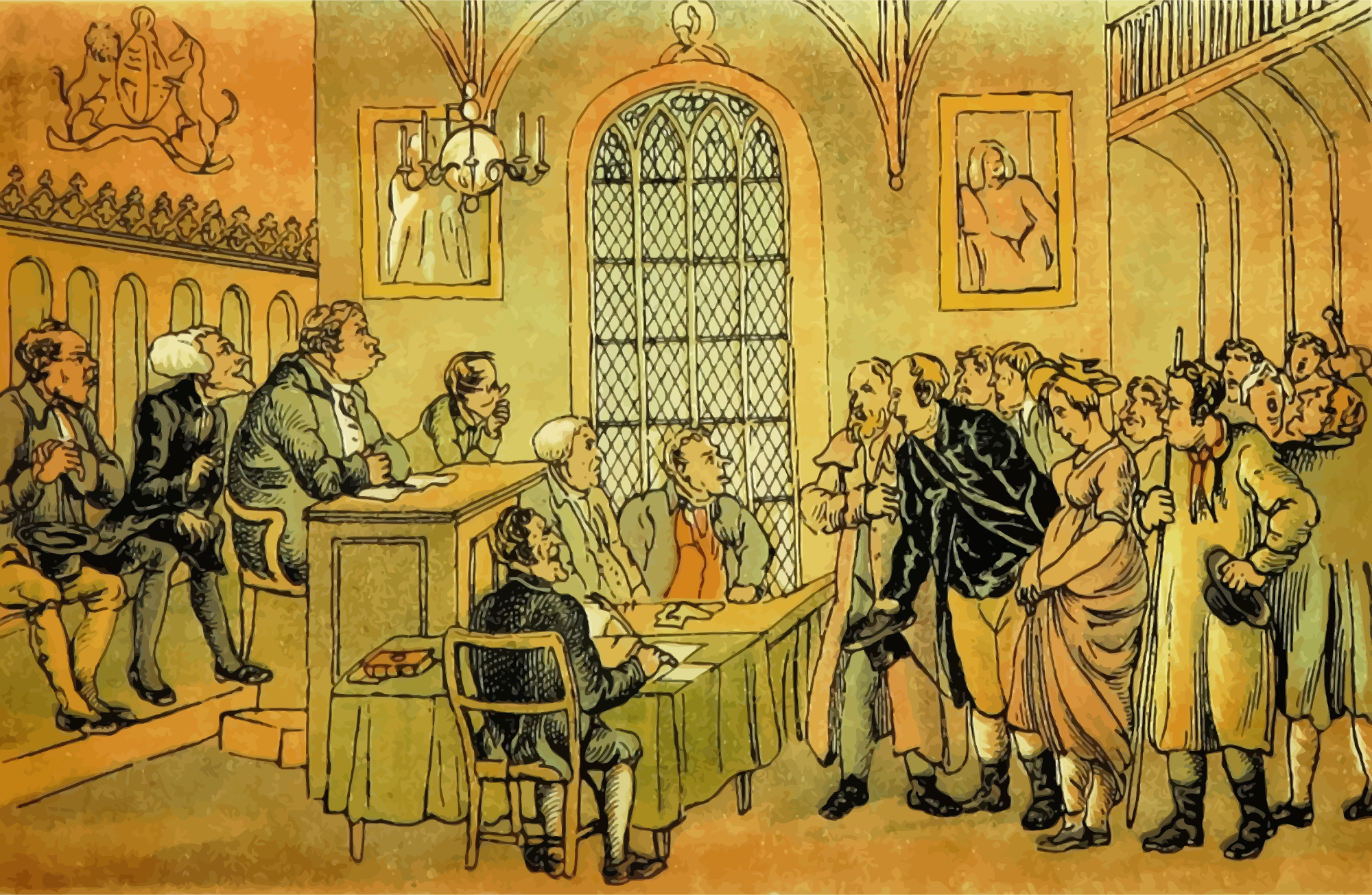
Courtroom, unknown artist. Public Domain Vectors.
More Context: What's Happening People?


As land values increased, an increasing number of Anglo settlers began "squatting" on what they claimed to be vacant lands.
Double standards were common, loopholes in the treaty were exploited, and the courts frequently settled in favor of Anglo settlers.
Sometimes, these settlers would immediately sell their newly acquired land to developers at large profits.

Chicano Movement Connections: What's Happening People?


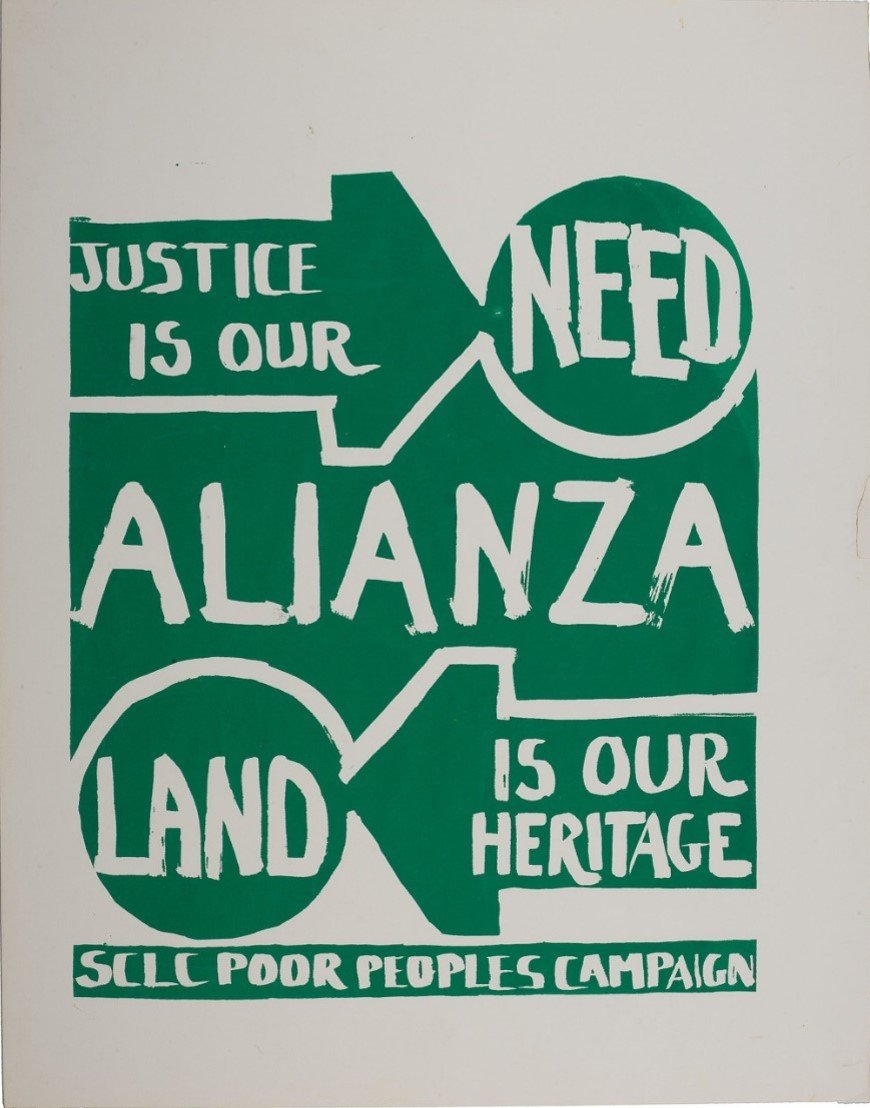
Justice is Our Need..., unknown artist. National Museum of American History.
Extension Activity: Remembering through Poetry


- How can poetry help us remember the past? Or help us express difficult feelings about losing something?

Maya Angelou, photo by Ross R. Rossin. National Portrait Gallery.
- Students can choose a theme, either reflecting on a difficult experience in the past, or reflecting on a loss. That difficulty or loss may be big or small. The point is to reflect honestly on a vivid feeling.
- Explore the potential of poetry in expressing and addressing historical and personal loss, experiences of injustice, and the strong emotions that may remain.
“The more you know of your history, the more liberated you are.”

Learning Checkpoint

- What was the Treaty of Guadalupe Hidalgo, and what did it promise?
- Why did Chicano movement leaders, activists, artists, and authors think the promises of the Treaty of Guadalupe Hidalgo had been broken?
End of Path 1! Where will you go next?




Resisting Displacement
Path 2

25+ minutes

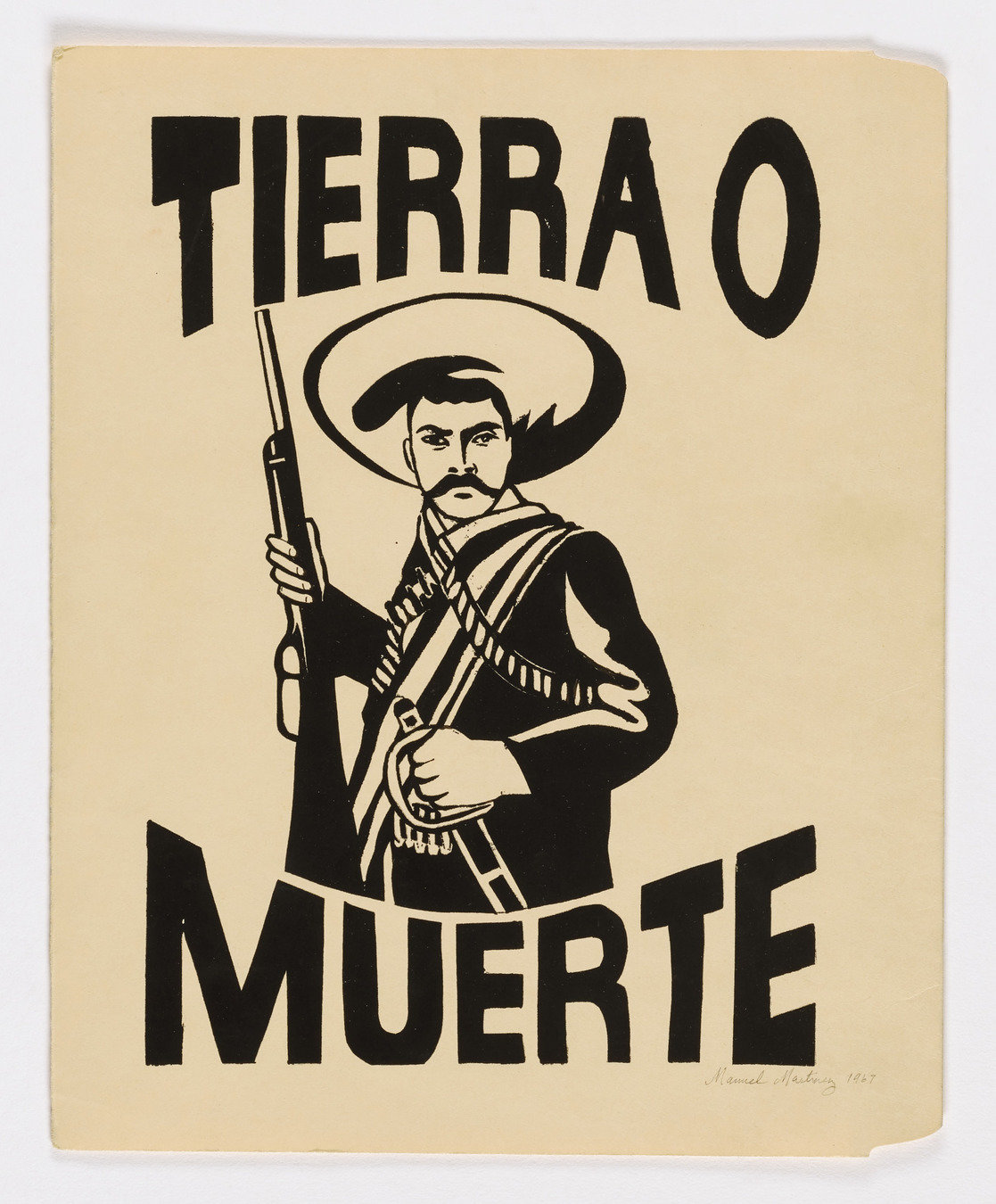
Tierra o muerte (Land or Death), by Emanual Martinez. Smithsonian American Art Museum.

"The Cricket and the Lion"
Listen to your teacher read this short Yaqui folktale and consider:
What lesson can we learn from this story?


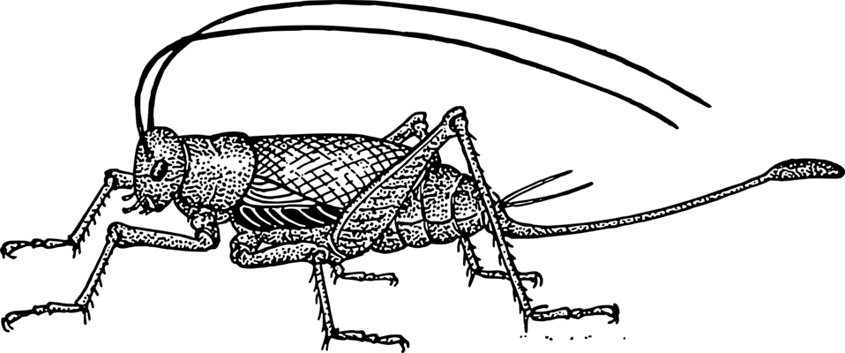
Cricket, created by papapishu. Open Clip Art Library, PD.

"The Cricket and the Lion"

Reies Lopez Tijerina, an important Chicano movement leader and electrifying speaker, often told the fable of the cricket and the lion at rallies.
He used this story to motivate people to resist . . . to fight for their rights – even though they were clearly underdogs and faced a steep, uphill battle.

Resurrection City: Untitled, photo by Jill Freedman (Reies Lopez Tijerina pictured in the center). National Museum of African American History and Culture.
Reies Lopez Tijerina is best known for his aggressive attempts to reclaim and return land grants to the people he believed were the rightful owners.
Reies Lopez Tijerina



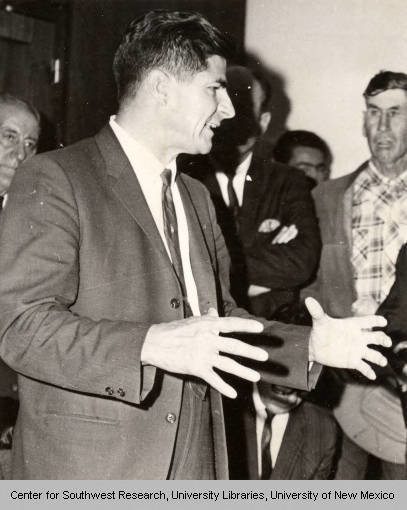
Reies López Tijerina, by Karl Kernberger. Center for Southwest Research, University Libraries, University of New Mexico.

La Alianza

In 1963, Tijerina founded a militant organization called La Alianza (The Federal Land-Grant Alliance), which felt they needed to use dramatic (and sometimes violent) tactics in their attempts to rectify perceived violations of the Treaty of Guadalupe Hidalgo.

Justice is Our Need..., unknown artist. National Museum of American History.

Chicano Nationalism

Tijerina is often credited with sowing the seeds of what is called Chicano Nationalism.
His concrete, aggressive attempts to claim a physical space for his people in the 1960s inspired others in the Chicana/o community to consider the possibility of establishing “a community of Mexicans with certain rights within the borders of the United States” (Rudolfo Anaya, as quoted in Montoya, 2016, p. 95).
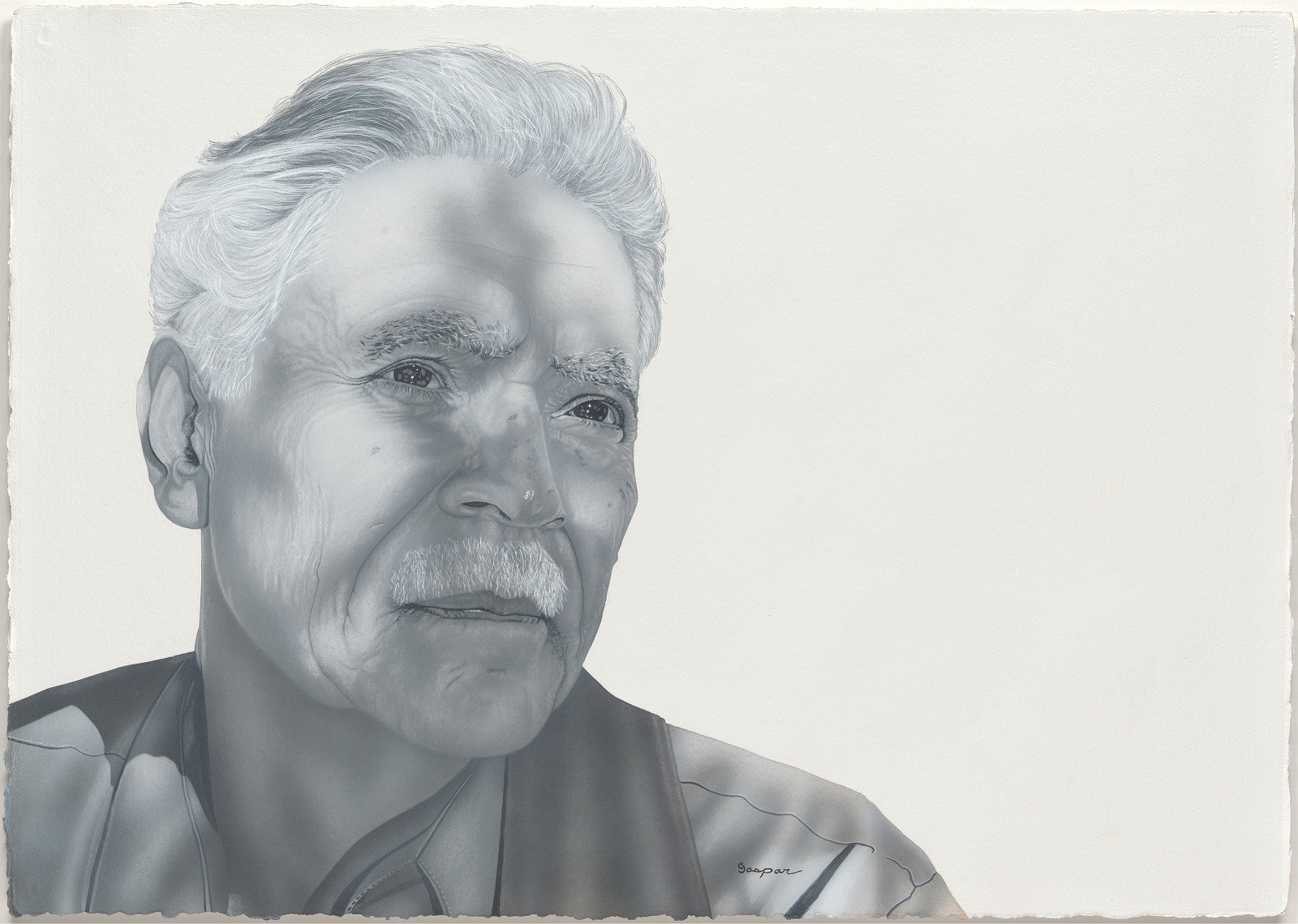
Rudolfo Anaya, by Gaspar Enríquez. National Portrait Gallery.

What is Chicano Nationalism?

In a general sense, the notion of Chicano Nationalism can be understood as a desire for more control of local conditions.
People in the Mexican American community wanted more autonomy over things like their economy, education system, and self-defense.
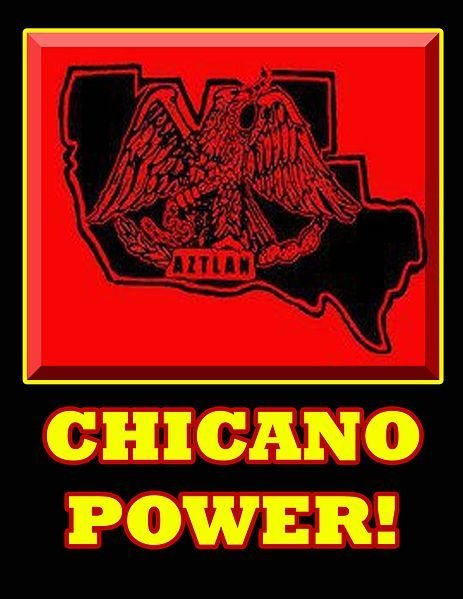
Chicano Power Flag of Aztlan, by Sukanara. Wikimedia Commons (CC-BY-SA-3.0).
Whereas Tijerina sought “place” in a physical sense, other Chicano movement leaders called for a “homeland” (Aztlán) in a more abstract sense.
Rodolfo "Corky" Gonzales

Corky Gonzales, unknown photographer. Denver Public Library Special Collections.

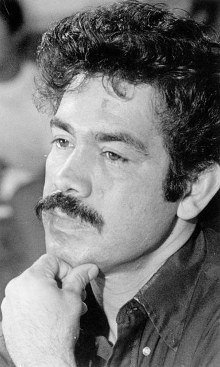
For leaders like Rodolfo “Corky” Gonzales, Aztlán represented the Chicana/o community’s desire to live in a place that was free from discrimination, exploitation, and disenfranchisement.
From their perspective, this type of place did not exist in the United States during this time.

Before the Chicano Movement: Earlier Examples of Resistance

In fact, people started to resist land takeovers and discriminatory treatment as soon as these events began, shortly after the Treaty of Guadalupe Hidalgo was signed in 1848 ...
Chicano Movement leaders (like Reies López Tijerina and Corky Gonzales) are some of the best-known resistors of the displacement and oppression faced by the Mexican American community, but they were certainly not the first.
Juan Cortina, The “Red Robber of the Rio Grande,” was a Texas landowner who became an enduring and controversial symbol of resistance after he shot and killed a Texas Ranger in 1859.
Early Resistor: Juan Cortina

Juan Nepomuceno Cortina, unknown photographer. Wikimedia Commons, (PD-US-expired).

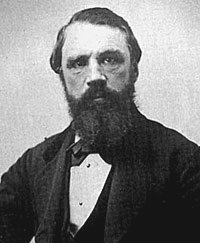
He led violent efforts to avenge perceived wrongs committed against Tejanos (Texans of Mexican descent) and fought for the rights he believed were guaranteed by the Treaty of Guadalupe Hidalgo.
Gregorio Cortez, a hired agricultural worker who lived in south Texas, also achieved folkloric notoriety for his efforts to resist authority along the US-Mexican border.
In 1901, he was accused of stealing a horse and killing two sheriffs and spent 13 days on the run from the Texas Rangers.
Early Resistor: Gregorio Cortez

Gregorio Cortez, unknown photographer. Texas State Library and Archives Commission.

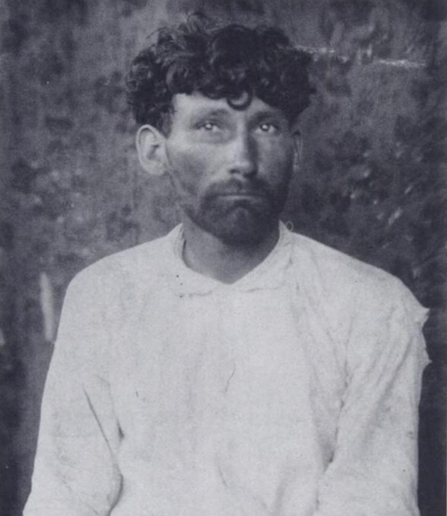

Remembering Gregorio Cortez through Music

Various renditions of songs inspired by the legend of Gregorio Cortez are available in the Smithsonian Folkways Collection.
Why do you think there were so many songs written about Gregorio Cortez?


Listening Activity: Gregorio Cortez

Listen to short excerpts (30-45 seconds) from three songs in the Smithsonian Folkways catalog that were written about Gregorio Cortez.
Option 1: "El corrido de Gregorio Cortez" (José "El Patrullero" Moreno)
Option 2: "Gregorio Cortéz" (Los Pingüinos del Norte)
Option 3: "Gregorio Cortéz" (Agustín Lira and Alma)

Listening Activity: Gregorio Cortez

Next, choose one of these songs to analyze in a more in-depth way:
Option 1: "El corrido de Gregorio Cortez" (José "El Patrullero" Moreno)
Option 2: "Gregorio Cortéz" (Los Pingüinos del Norte)
Option 3: "Gregorio Cortéz" (Agustín Lira and Alma)

Analyzing and Interpreting Music

When analyzing and interpreting (and comparing/contrasting) music, it is important to consider both the musical sounds that you hear and the people who make and enjoy it, and/or find it meaningful and useful.

Listening Activity: Gregorio Cortez

On your own, listen to the audio recording several times, read the translation of the lyrics, and complete your listening log.
This activity can be completed during class or assigned as homework.

Learning Checkpoint
- Why have so many songs been written about Gregorio Cortéz?
- What are some factors to keep in mind when analyzing and interpreting music?

End of Path 2! Where will you go next?



Reclaiming "Place"
Path 3

40+ minutes


Emiliano Zapata Statue at Chicano Park, photo by Russell Hart. ShotFromTheHart Studio.
Reclaiming "Place"



Chicano Power!, by Sukanara. Wikimedia Commons (CC-BY-SA-3.0).
Exchange Copy of the Treaty of Guadalupe Hidalgo. National Archives, PD (U.S. Code § 105).

It is true that many of the large-scale goals articulated by Chicano movement leaders in the 1960s and 1970s (like Reies López Tijerina and Corky Gonzales) were not fully realized.
Reclaiming "Place"


However, one does not need to look far in order to find visible reminders that Chicana/o activists’ attempts to reclaim their rightful place in American society have not been in vain.
The Story of Chicano Park

At the height of the Chicano movement in the late 1960s, the San Diego City Council agreed to build a park for the residents of a predominantly working class Mexican American neighborhood known as Barrio Logan.

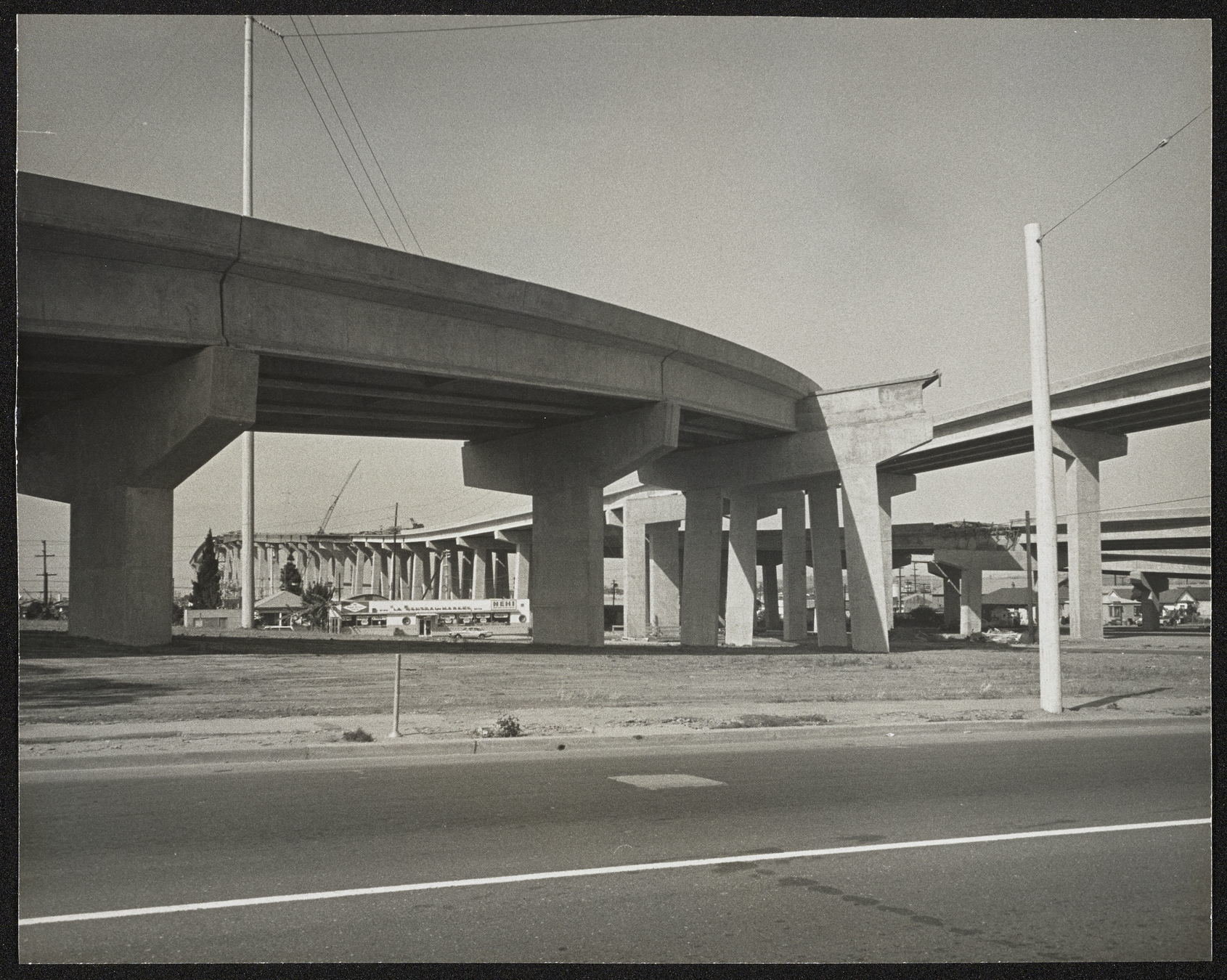
Construction of San Diego-Coronado Bridge Seen from Barrio Logan, San Diego, photo by Jack W. Carroll. Coronado Public Library.
The Story of Chicano Park

However, on April 22nd, 1970, Barrio Logan residents noticed construction equipment set up on the park’s designated site.
They found out that the city had decided to build a Highway Patrol station and parking lot on the site instead of a park.


The Story of Chicano Park

Barrio Logan residents and other Chicana/o activists decided to come together to occupy this land in protest.


Occupation of Chicano Park, photo by Les McClean. Wikimedia Commons (CC-BY-SA-4.0).
The Story of Chicano Park: A Happy Ending

Their efforts were ultimately successful . . . Chicano Park is now “a beloved community gathering space, a designated historical landmark, and a popular tourist attraction” (Díaz, 2020).

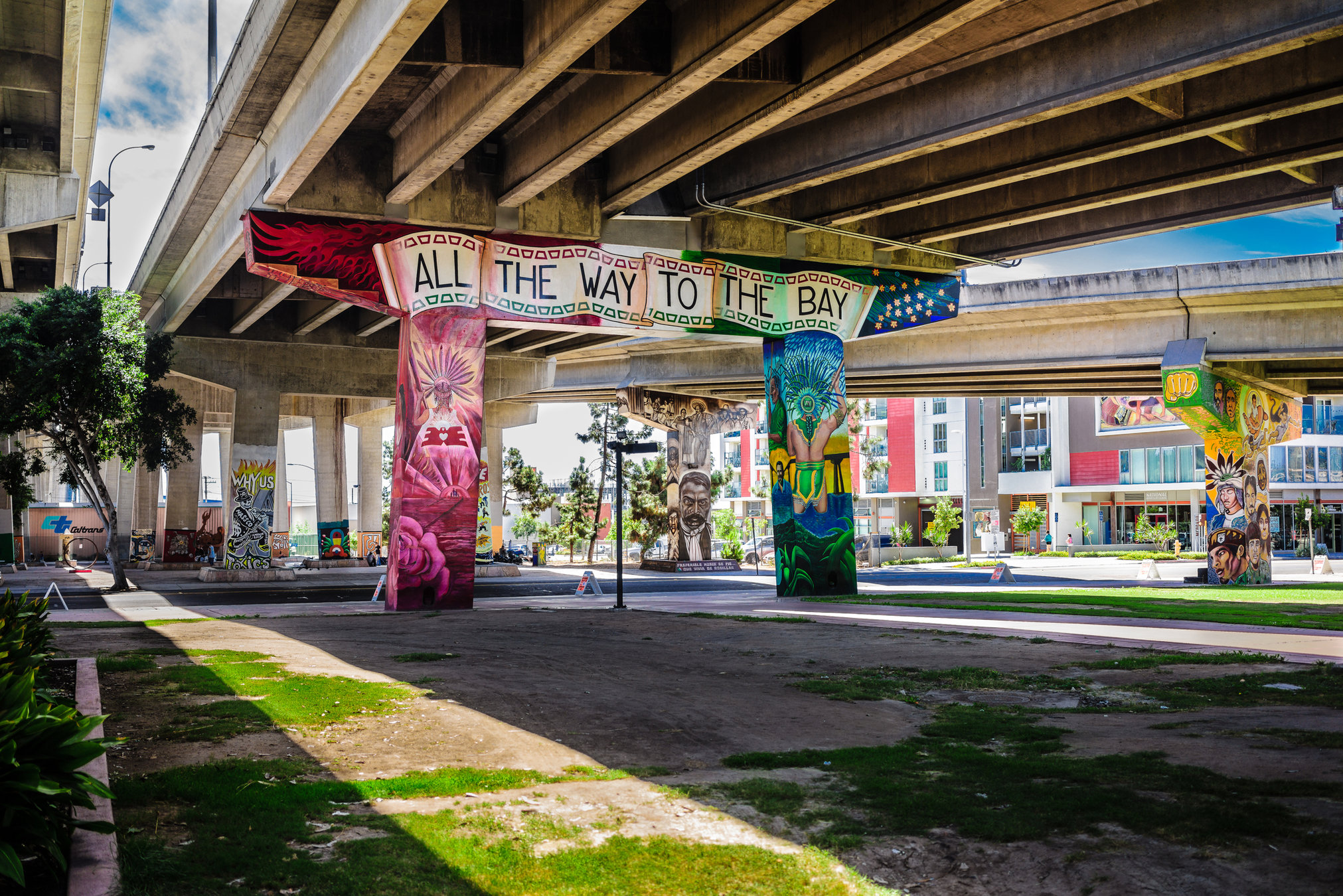
All the Way to the Bay, photo by ilandavid. Dreamstime.
Chicano Park Today

Today, Chicano Park sits on nearly eight acres under the foot of the bridge that links San Diego to Coronado Island.
It is home to one of the largest collections of murals in the United States.


Under the Bridge at Chicano Park, photo by Russell Hart. ShotFromTheHart Studio.
Documenting the Story of Chicano Park Through Music

In 1979, a musical group called Los Alacranes Mojados told the story of the Chicano Park through song.

Rolas de Aztlán: Songs of the Chicano Movement, back cover art by Communication Visual. Smithsonian Folkways Recordings.
Attentive Listening: "Chicano Park Samba"

As you listen to this recording, think about these guiding questions:
What do you notice about the harmonic structure (chords)?
Why is this song so long?
What do you notice about the tempo?


About "Chicano Park Samba"

Chords: This song only has two chords (Em and F), which are repeated for the entire duration of the song.

Length: This recording features several lengthy improvisational sections.
Tempo: This recording features several tempo changes.
"Chicano Park Samba": Musical Influences

Los Alacranes Mojados cited a variety of different influences for this song, including Mexican traditional, contemporary Latino, and African American musical styles.
This song draws inspiration from samba (a musical style that originated in Brazil)– and other Latin American musical styles.
Sambas are often written in 2/4 time, with the emphasis placed on the second beat of the measure.

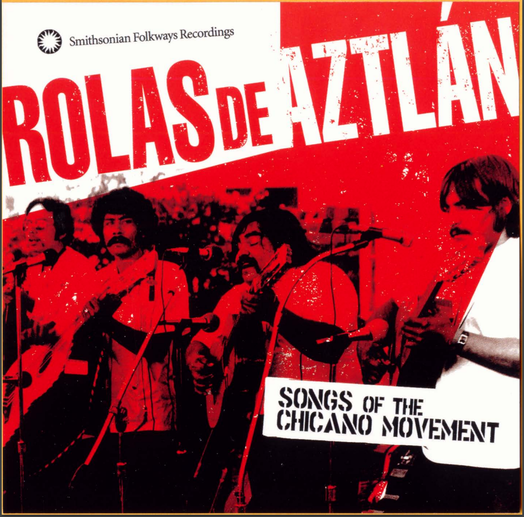
Engaged Listening: "Chicano Park Samba"

The notation for a basic samba rhythm is shown below:
Listen an excerpt from "Chicano Park Samba" again . . .
- Can you use this rhythm to clap along?
- Can you tap the beat, emphasizing Beat "2"?


Land as "Place"


Chicano Park provides a tangible example of how physical space (land) is important and can be very powerful.

Emiliano Zapata Statue at Chicano Park, photo by Russell Hart. ShotFromTheHart Studio.
Reclaiming Symbolic Place


Chicana/o activists often used symbols and imagery, such as Aztlán (the mythical homeland of the Aztec people) to remind people that they were not outsiders . . . they had a right to demand a place in American history and society.

Flag of Aztlán, unknown artist. Wikimedia Commons, PD
Sometimes, however, reclamation of place is not concrete or tangible. Sometimes it is more abstract, and/or symbolic…
Reclaiming Symbolic Place


Today, university Chicana/o Studies programs and student organizations like the Mexican American Youth Organization (MAYO) provide enduring symbols that remind us of how Mexican American communities have persevered and reclaimed their rightful "place" in American society.
Rally at the University of Texas Austin in the 1970s, photo by Nancy de los Santos. Mexic-Arte Museum.

"Estoy aquí" (I Am Here)

Click to the next slide to watch a video about a song called "Estoy aquí" (I am Here) . . . written and recorded by Quetzal, a popular contemporary music ensemble from East Los Angeles.

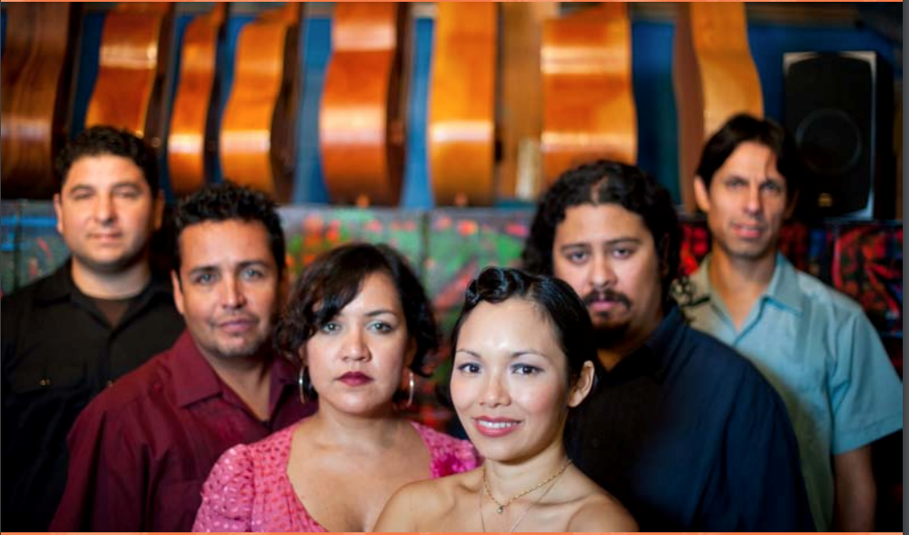
Quetzal, photo by Brian "B+" Cross. Smithsonian Folkways Recordings.
According to the musicians, this song is a symbol ... it reinforces “the claims of space and presence that Mexicano communities make, in both Mexico and the United States” (Imaginaries, liner notes).
Songs can also be powerful symbols.


Engaged Listening: "Estoy aquí" (I Am Here)

Listen to the first 35 seconds of "Estoy aquí" several times. Pay close attention to the melodic riff played on the requinto jarocho guitar.
Can you hum along?

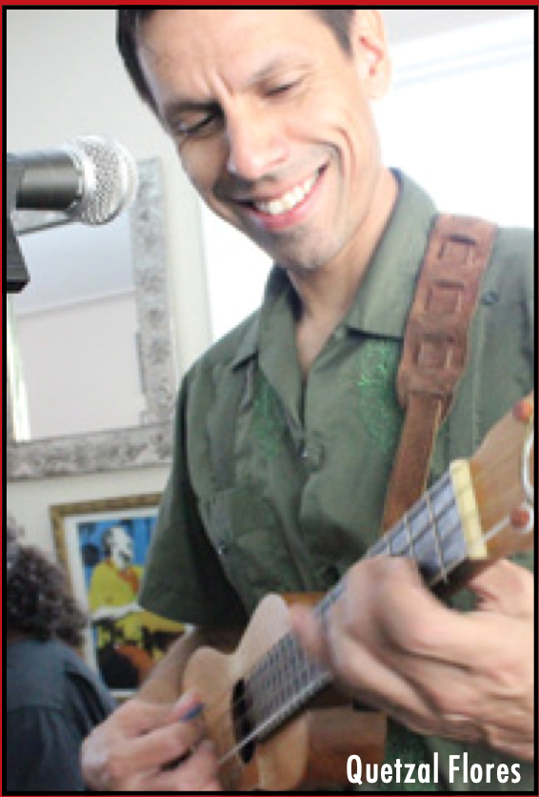
Quetzal Flores, photo by Karen Walker Chamberlain. Smithsonian Folkways Recordings.
Singing the Natural Minor Scale

This riff is based on the D natural minor scale (i.e., aeolian mode), which lowers the 3rd, 6th, and 7th degrees of the major scale.
Can you sing the natural minor scale using solfege or numbers?


Singing the Harmonic Minor Scale

This riff also includes a raised 7th, which signals a shift to the harmonic minor scale. However, regarding this riff, the major 7th seems to function as a passing tone.
D harmonic minor scale



Learning Checkpoint
- Can you identify some examples of how Chicana/os have reclaimed their rightful "place" in American society (in both concrete and symbolic ways)?
- What are some musical characteristics of a samba?
- What is the difference between the natural and harmonic minor scales? Can you demonstrate it?

End of Path 3 and Lesson Hub 8! Where will you go next?







Lesson Hub 8 Media Credits

Audio courtesy of:
Smithsonian Folkways Recordings
Video courtesy of:
Smithsonian Folkways Recordings
Images courtesy of:
TM/© 2021 the Cesar Chavez Foundation. www.chavezfoundation.org
Coronado Public Library
Denver Public Library Special Collections
National Archives
National Museum of African American History and Culture
National Portrait Gallery
Department of Chicana and Chicano Studies, San Diego State University
ShotFromTheHeart Studio
Smithsonian American Art Museum
Smithsonian Folkways Recordings
Texas State Library and Archives

© 2021 Smithsonian Institution. Personal, educational, and non-commercial uses allowed; commercial rights reserved. See Smithsonian terms of use for more information
This Lesson was funded in part by the Smithsonian Youth Access Grants Program with support from the Society for Ethnomusicology and the National Association for Music Education.
For full bibliography and media credits, see Lesson 8 landing page.


